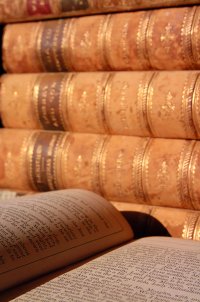 Electoral rolls provide useful information about your ancestors’ residence and eligibility to vote. New South Wales electoral rolls are available from 1842 to 2009, although rolls were not updated every year, and some of the early ones have been lost.
Electoral rolls provide useful information about your ancestors’ residence and eligibility to vote. New South Wales electoral rolls are available from 1842 to 2009, although rolls were not updated every year, and some of the early ones have been lost.
Each listing includes name, address, and occupation (up to 1984). It is possible to see which family members were living in the same address, and so can be used instead of the censuses available in other countries to determine whereabouts and household composition.
If you do know that your ancestor moved from one place to another electoral rolls can give you an idea of when he or she moved. A search of the early rolls, when there was a property requirement, can tell you whether your ancestor was a freeholder or leaseholder, or just a resident.
Australian electoral rolls were published in books for distribution. Most of these have been microfilmed (in the 1800s) or on microfiche (1901 onwards) and are available in many libraries. Most libraries do not have all years, or all electorates. From the 1990s onwards the microfiche are indexed across Australia.
Who had the vote?
The qualifications to vote in New South Wales elections has changed over time. This means that your ancestor may not have been entitled to vote. Here is a brief timeline:
1843 Of the 36 members of the Legislative Council 24 were now elected by the colonists, provided they owned freehold property valued at £200 or more, or they leased property at £20 or more.
1851 Property value required reduced to £100 freehold or £10 leasehold.
1856 Responsible government introduced, with a Lower House elected by colonists. Occupiers of houses worth at least £10 per year included.
1858 All adult males could vote if they’d lived in the electorate for 6 months or had been naturalised and lived in the Colony for two years, except for paupers, prisoners, police and the armed forces. A man could vote in all the electorates in which he held property.
1893 The property and length of residence requirements were abolished, so that itinerant workers could vote.
1902 Following the federation of all the Colonies into the Commonwealth of Australia in 1901 women were given the vote in Commonwealth and New South Wales elections.
1925 First election in which voting was compulsory.
1934 The Legislative Council was replaced by a body that was indirectly elected by the Lower House.
1974 Voting age lowered to 18 years.
1978 Upper House elected along with Lower House in general elections.
See also:
State Records NSW Archives in Brief 5 – Electoral Rolls
State Records NSW Brief Guide No. 1 – Electoral Rolls
State Library NSW Instructions for searching the NSW Electoral Rolls 1903-1989
[…] [Most of this post has been published previously at http://heritagegenealogy.com.au/research/electoral-rolls/%5D […]